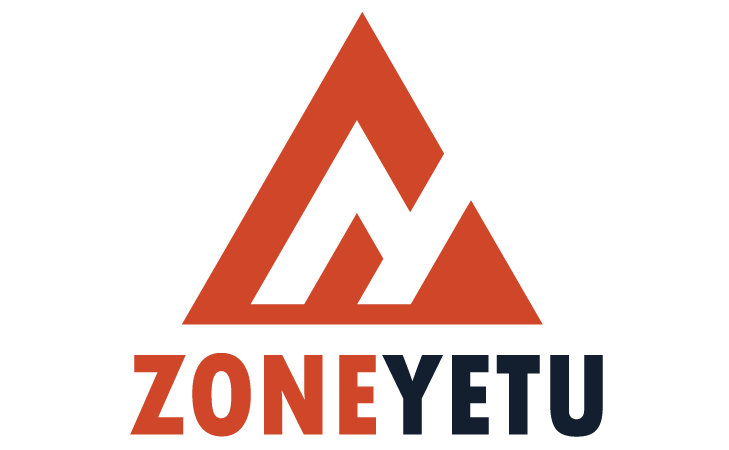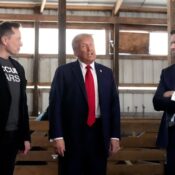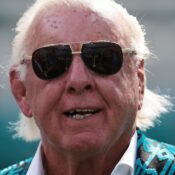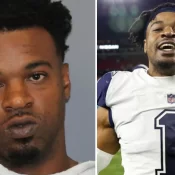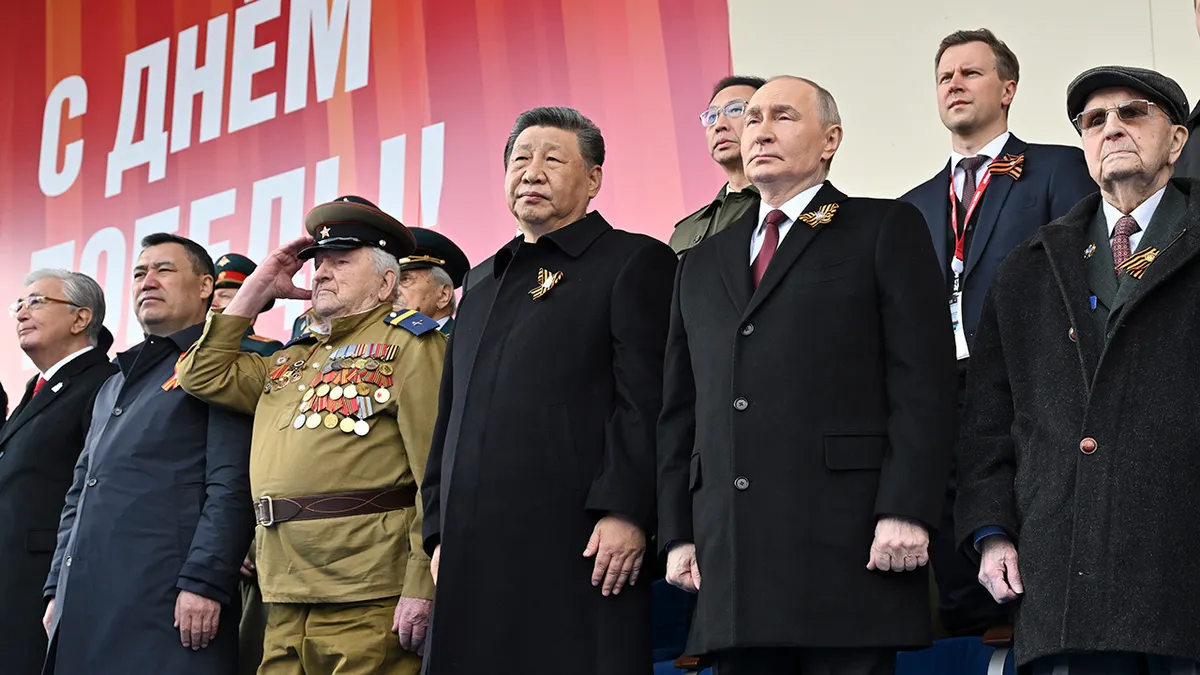
Russia Welcomes China’s Xi Amid Controversial Truce and Celebrates Victory Day with a Display of Power
Putin commemorates a significant Victory Day parade as drones soar above, greeting China’s Xi Jinping while Ukraine dismisses Russia’s ceasefire proposal.
On Friday, Russian President Vladimir Putin commemorated the 80th anniversary of Victory Day with an elaborate military parade in Moscow’s Red Square, where he delivered a resolute speech connecting the legacy of World War II to Russia’s current invasion of Ukraine.
The commemorations, conducted with stringent security measures, saw the attendance of thousands of soldiers and more than 20 international leaders, including Chinese President Xi Jinping, whose significant presence highlighted the strengthening relationship between Moscow and Beijing.
For the first time, combat drones, now pivotal to the Ukraine war, paraded through Red Square, serving as a striking emblem of Russia’s changing approach to warfare. More than 11,000 troops took part in the event, which included 1,500 veterans from the Ukraine frontlines. They were reviewed by Defence Minister Andrei Belousov prior to Putin’s address and a national moment of silence.
Putin asserted that Russia would continue to serve as “an indestructible barrier against Nazism, Russophobia, and antisemitism,” reiterating his widely discredited assertion that Ukraine’s leadership possesses Nazi ideology. He asserted that the nation stands united in support of the so-called “special military operation,” which is now entering its fourth year.
“Truth and justice are on our side,” Putin stated, reinforcing domestic backing for the war as he stood next to Xi, who donned the St George ribbon, a Russian military emblem now prohibited in several neighboring countries.
China’s involvement was regarded as the focal point of the event’s political landscape. More than 100 Chinese soldiers paraded alongside Russian troops, with Putin commending the “courageous people of China.” The two leaders engaged in two rounds of formal discussions and an informal conversation regarding Ukraine prior to the parade. Russian state media praised the relationship between the countries as the strongest it has ever been, explicitly characterizing their alliance as a counterbalance to the “collective West.”
Military units from North Korea, Vietnam, and Mongolia were also in attendance, highlighting Russia’s shift in diplomatic focus towards the east. North Korean soldiers refrained from marching, yet Putin took the opportunity to greet General Kim Yong-bok, who is thought to oversee North Korean units aiding Russia in Ukraine’s Kursk region. Kim Jong Un, the leader of North Korea, made a visit to the Russian embassy in Pyongyang, demonstrating a gesture of solidarity.
The parade occurred during a disputed, one-sided three-day ceasefire announced by Russia to align with the anniversary. Kyiv rejected the truce, labeling it a “theatrical show,” and accused Moscow of initiating thousands of attacks since it commenced at midnight Wednesday. Ukraine reported nearly 200 clashes, 18 airstrikes, and almost 4,000 artillery incidents on the second day of the ceasefire, including a drone attack that resulted in the death of a woman in Prymorske, Zaporizhzhia region.
Russia maintains that it is adhering to the ceasefire and accuses Ukraine of ongoing violations, asserting that its forces have only reacted in a “mirror-like” fashion. The ceasefire is set to conclude on Saturday night.
Germany’s newly elected Chancellor Friedrich Merz conveyed a sense of cautious optimism, indicating that the temporary truce might be prolonged to 30 days should Moscow consent. “The ball is now completely in Moscow’s court,” Merz stated.
Ukrainian President Volodymyr Zelensky, in a national address on Thursday, stated that Kyiv was prepared for a genuine ceasefire “starting right now” and urged Russia to demonstrate its sincerity. “He urged for no missile or drone strikes, and no hundreds of assaults on the front.”
Zelensky engaged in a conversation with U.S. President Donald Trump, highlighting the importance of a continuous 30-day ceasefire as a means to achieve peace. Trump supported the proposal, urging for an unconditional ceasefire and warning of additional sanctions for those who do not comply.
In light of international appeals for de-escalation, Moscow was heavily secured due to worries that Ukraine could target the parade. Military analysts such as Mykhailo Samus indicated that Kyiv would probably exercise restraint because of the presence of global dignitaries, yet asserted that the parade continued to be a valid target under international law.
Notable among the controversial attendees were Brazil’s President Luiz Inácio Lula da Silva, Venezuela’s Nicolas Maduro, Serbia’s Aleksandar Vucic, and Slovakia’s Prime Minister Robert Fico—Europe’s sole representative. Their involvement drew criticism from EU officials, as EU foreign policy chief Kaja Kallas cautioned that EU candidate nations ought to avoid endorsing Putin’s wartime spectacle.
Taiwan criticized China’s actions, alleging that Beijing and Moscow are distorting historical facts. Taiwan’s government stated that the Chinese communist forces had a limited involvement in World War II, unlike the republican government that subsequently retreated to the island.
As jets thundered over Red Square and tanks rolled past the Kremlin walls, Russia’s display of power functioned not only as a tribute to history but also as a striking political statement—one that conveyed defiance towards the West and solidarity with its authoritarian partners.
All Categories
Recent Posts
Tags
+13162306000
zoneyetu@yahoo.com
